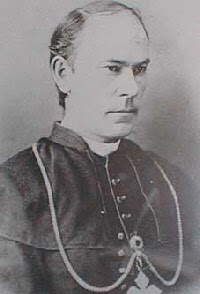.jpg)
The high Word plays in every kind of form, mixing, as he wills, with his world here and there. (p. 164)
Here is part of what St Maximus has to say about this:
The divine Paul, the great Apostle, who is both an initiate himself and initiates others in the divine and secretly-known wisdom, calls [this mystery] the foolishness of God and his weakness, because, I think, of its transcendent wisdom and power; the great and divinely-minded Gregory calls it play, because of its transcendent prudence. For Paul says, ‘The foolishness of God is wiser than men and the weakness of God is stronger than men’ (I Cor. 1:25); while Gregory says, The high Word plays in every kind of form, mixing, as he wills, with his world here and there.’ Each, by privation of what with us are most powerful attributes, points to what the divine possesses, and by negations of what is ours makes affirmation of the divine. For with us foolishness, weakness and play are privations, of wisdom, power and prudence, respectively, but when they are attributed to God they clearly mean excess of wisdom, power and prudence. (pp. 164-5)
Fr Louth introduces the Ambigua by pointing out that St Gregory’s reference to the ‘high Word’ playing ‘in every kind of form’—
recalls the similar imagery, used to rather different purpose, by Gerard Manley Hopkins [in his sonnet, ‘As kingfishers catch fire’, here]:
For Christ plays in ten thousand places,
Lovely in limbs, and lovely in eyes not his
To the Father through the features of men’s faces.
While I can’t comment on Hopkins’s intentions in using this imagery of ‘play’, St Maximus’s comments on St Gregory’s use of the same imagery make it clear that as Orthodox we do not understand such things in the way that many Protestants may who are under the influence of what is called a ‘theology of play’. One blogger, for instance, has asked how play cannot be part of what our Lord intends when he says we should be like children (Mark 10:15). As Orthodox, however, we have the examples of the Saints to show that this is so. Concerning, e.g., St Theodosius of the Kiev Caves, it is written (The Hagiography of Kievan Rus’, trans. Paul Hollingsworth [Cambridge, MA: Harvard U, 1992], p. 37):
Moreover, he would not approach the children at play, as is the custom of youths, but abhorred their games. His clothing was poor and patched. For this reason his parents compelled him to dress in fresh clothes and go out and play with children. But he would not heed them and wished instead to be as one of the poor and, moreover, to be entrusted to a teacher to study Scripture.
Similarly, the Venerable Bede tells us, in his Life of St Cuthbert, that when another child prophesied the future career of the Saint, upbraiding him, ‘It does not become you to be playing among children’, he ‘immediately abandoned his vain sports, and returning home, began from that moment to exhibit an unusual decision both of mind and character’. In this way, St Bede writes earlier, the future bishop ‘most abundantly laid aside all those childish things’.
It would seem that these Saints recognised the truth that St Maximus expressed, that ‘play’ involves a deficiency in ‘prudence’. Of course, there is also a certain saying about St Anthony the Great that we should take into account (from Benedicta Ward, trans., The Sayings of the Desert Fathers: The Alphabetical Collection, rev. ed. [Kalamazoo, MI: Cistercian, 1984], pp. 3-4):
13. A hunter in the desert saw Abba Anthony enjoying himself with the brethren and he was shocked. Wanting to show him that it was necessary sometimes to meet the needs of the brethren, the old man said to him, ‘Put an arrow in your bow and shoot it.’ So he did. The old man then said, ‘Shoot another,’ and he did so. Then the old man said, ‘Shoot yet again,’ and the hunter replied ‘If I bend my bow so much I will break it.’ Then the old man said to him, ‘It is the same with the work of God. If we stretch the brethren beyond measure they will soon break. Sometimes it is necessary to come down to meet their needs.’ When he heard these words the hunter was pierced by compunction and, greatly edified by the old man, he went away. As for the brethren, they went home strengthened.
So it would seem that in particular cases, some sort of recreation may be necessary for those of us who are less advanced on the path to salvation (and after all, the story about St Anthony concerns monks—how much easier might it be to ‘stretch’ laymen ‘beyond measure’?). But at the very least we would do well to recognise that ‘play’ is not, according to the Patristic tradition, something we can find in God, at least not in a way likely to appeal to modern Americans accustomed to amusing ourselves to death and then looking for a moral justification for it. Incredibly, as they grow closer to Him, it is not entirely uncommon to find even wise and holy children themselves leaving play behind and moving on to something higher.



.jpg)




.jpg)
+-+Caspar+David+Friedrich.jpg)








.jpg)
.jpg)

